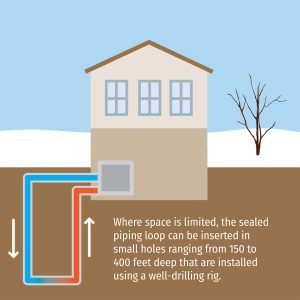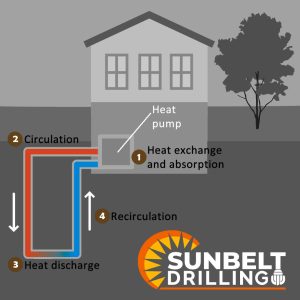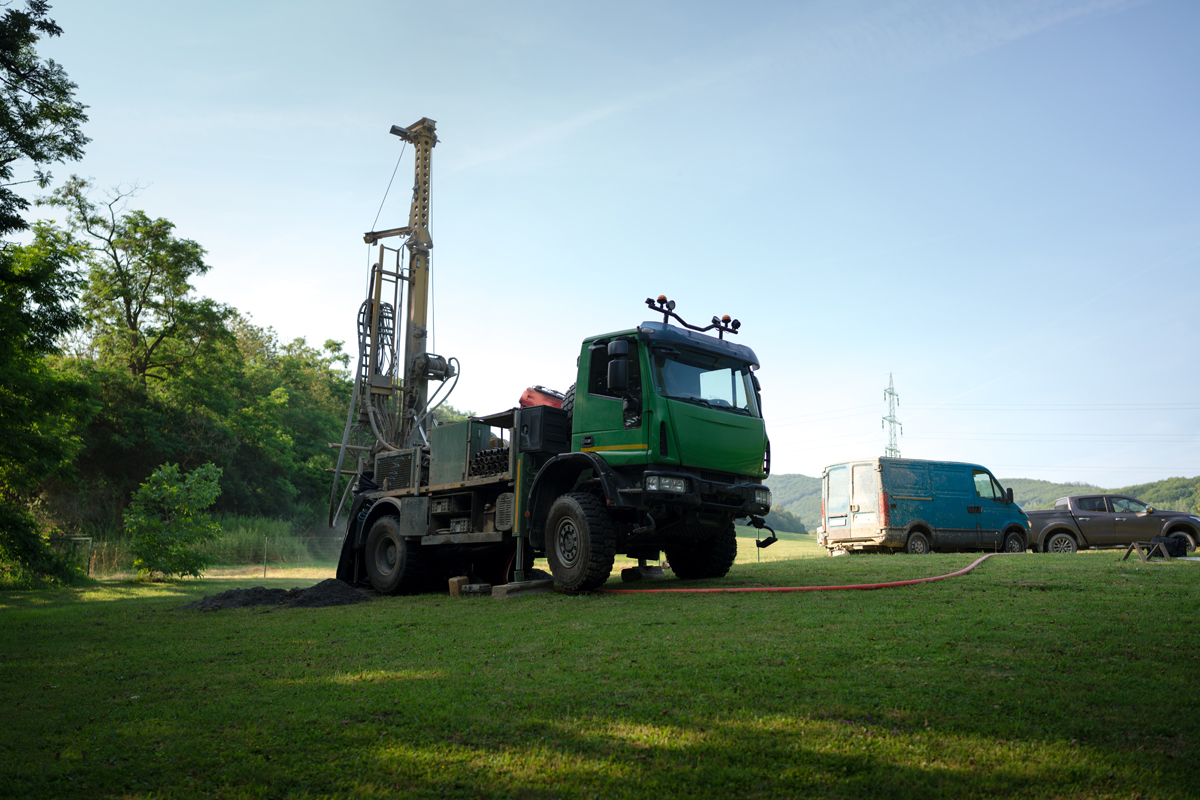The process of drilling deep into the earth’s crust is known as geothermal drilling. This method is executed to ultimately access the heat found within. This heat can then be used to generate electricity or for the purposes of heating and cooling. Today, geothermal wells range from 100 feet all the way to 10,000 feet deep.
What Is Geothermal Well Drilling?
Geothermal is the green alternative to heating and cooling your home or business! Geothermal, also referred to as earth-coupled heat, geo-exchange, geothermal heat pumps (GHPs), ground-source heat pumps (GSHPs), ground Source Heat Exchange systems, and water source heat pumps is one of the most efficient ways for heating and cooling a home or building of any size.
These systems can be installed in new homes or buildings or retrofitted into existing homes and buildings. The temperature of the ground beneath the earth’s surface remains relatively constant throughout the year, even though the outdoor air temperature may fluctuate greatly with the change of seasons.
These systems don’t have to work as hard (therefore using less energy) because they are drawing from the earth’s constant temperature. There is a series of loops installed in boreholes that are drilled into the earth and then connected by pipes to move liquid (most often water) through the loops and into a heat pump inside the home.
In the summer, the relatively cool ground absorbs a home’s waste heat more readily than the warm outdoor air. The heat pump concentrates the earth’s thermal energy and transfers it to air circulated through interior ductwork in your home or building. This works conversely in the winter.


Average Geothermal Well Depth
These wells undoubtedly vary in depth. The exact depth will depend on both the geological conditions and intended use of the extracted energy. Some wells can dive miles down into the earth’s crust while most others may only reach down a hundred feet.
Understanding the depth of these wells is essential for the optimization of energy extraction. It also helps to ensure the sustainability of geothermal resources. Depth will play a crucial role in figuring out the temperature and pressure of geothermal fluids that will be encountered.
Let’s take a look at typical depths associated with shallow, moderate, and deeper geothermal wells.
Shallow Depth Wells
Geothermal well depth varies based on their intended use. Shallow wells, for instance, are often drilled for residential heating and cooling applications.
- Average Depth Range: 100-400 ft.
Moderate Depth Wells
These wells are often used for commercial heating, as well as some agricultural applications.
- Average Depth Range: 400-1,500 ft.
Deep Wells
Deep wells can extend beyond 10,000 feet, mainly used for the generation of electricity.
- Average Depth Range: 1,500-10,000 ft.
Geothermal Well Depth Factors
There are three factors that ultimately influence how deep a well will be. Geological conditions, the purpose of the well, and the type of system will determine overall depth.
If you are interested in establishing a well for your commercial or residential property, Arizona water well drilling services by Sunbelt Drilling include quality water well systems and Ground Source heat pump installations. Sunbelt Drilling is an IGSHPA certified Driller/Installer for geothermal HVAC systems. We specialize in air rotary drilling, mud rotary drilling, reverse rotary drilling and casing hammer. Based in Phoenix, Arizona, Sunbelt Drilling serves all of Arizona. Sunbelt Drilling, LLC was formed in 2001.
Our experienced team has worked with almost every consulting firm in the state and most of the municipalities and has extensive knowledge and experience in the completion of large Commercial Bonded Projects. Contact the team at Sunbelt Drilling today for more information!






